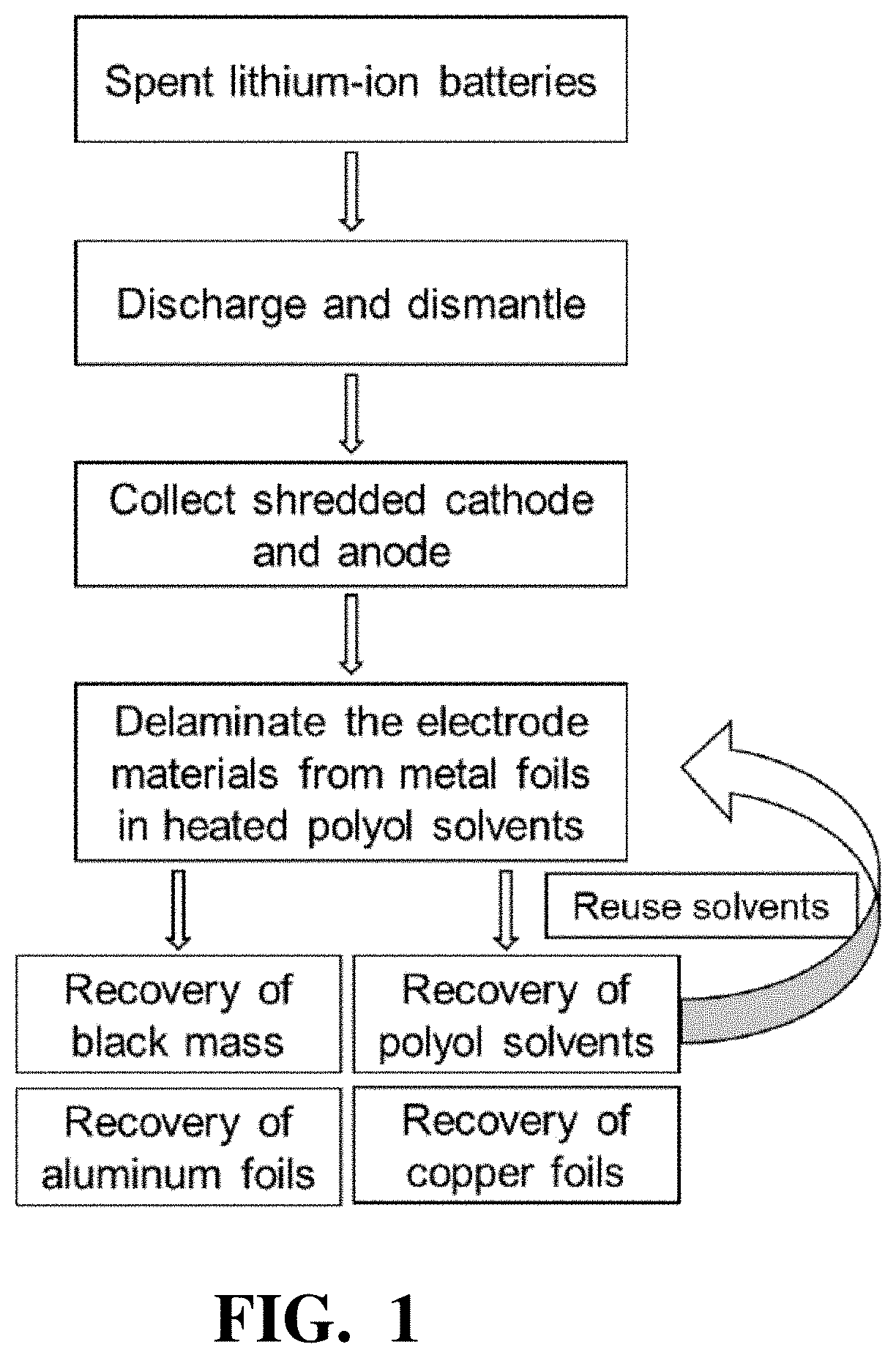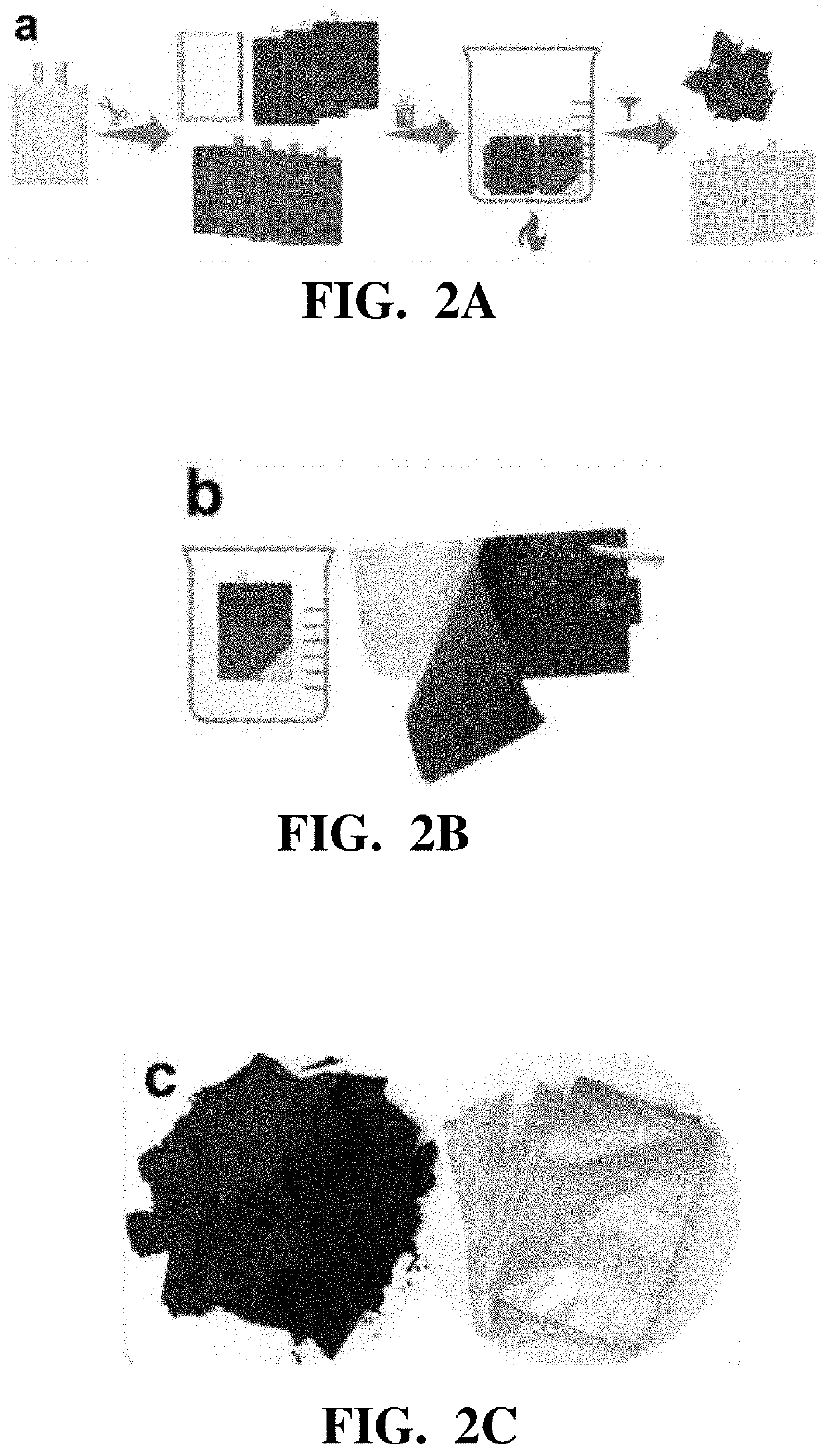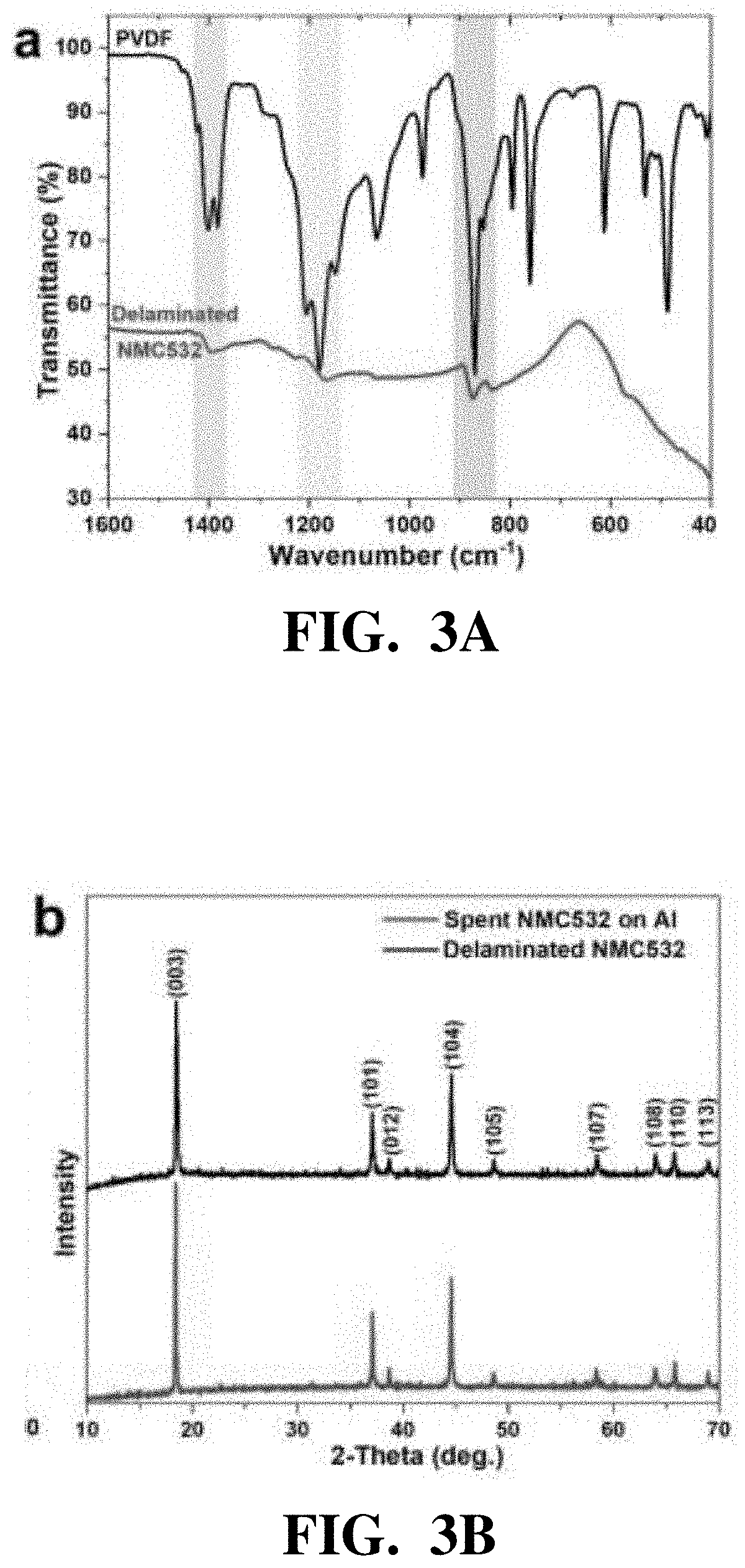Efficient recovery processes for the black mass from spent lithium-ion batteries
a lithium-ion battery and black mass technology, applied in the field of battery recycling, can solve the problems of increasing the risk of contamination of local soil and groundwater, increasing the risk of end-of-life batteries flooding the market, and removing useful materials from many electronic supply chains, and achieves the effect of high efficiency and cost-effectiveness
- Summary
- Abstract
- Description
- Claims
- Application Information
AI Technical Summary
Benefits of technology
Problems solved by technology
Method used
Image
Examples
examples
[0073]A LiNi0.5Mn0.3Co0.2O2 (NMC532) cathode and graphite anode were fabricated using a pilot-scale slot-die coater (Frontier Industrial Technology). The cathode consisted of NMC532 (Toda America), carbon black (Denka), and PVDF binder (Solvay Solef 5130) in a weight ratio of 90:5:5. The areal loading of the NMC532 cathode was ˜11.5 mg / cm2.
[0074]A 1.4 Ah lithium-ion pouch cell (˜6×8 cm2) was then assembled in a dry room. After 4 formation cycles at C / 20, the pouch cell was charged / discharged at 1C / 2C rates for 1,000 cycles and the capacity degraded to 65.7% of its initial capacity. A graph of the electrochemical history of the fabricated pouch cell is shown in FIG. 10.
[0075]Cathode scraps were prepared from trimmings of a fabricated LiNi0.6Mn0.2Co0.2O2 (NMC622, Targray) cathode.
Characterizations & Analytical Instrumentation
[0076]The crystal structure, surface morphology, and composition of the cathode materials before and after separation, as well as the r...
PUM
| Property | Measurement | Unit |
|---|---|---|
| temperature | aaaaa | aaaaa |
| temperature | aaaaa | aaaaa |
| time | aaaaa | aaaaa |
Abstract
Description
Claims
Application Information
 Login to View More
Login to View More - R&D Engineer
- R&D Manager
- IP Professional
- Industry Leading Data Capabilities
- Powerful AI technology
- Patent DNA Extraction
Browse by: Latest US Patents, China's latest patents, Technical Efficacy Thesaurus, Application Domain, Technology Topic, Popular Technical Reports.
© 2024 PatSnap. All rights reserved.Legal|Privacy policy|Modern Slavery Act Transparency Statement|Sitemap|About US| Contact US: help@patsnap.com










